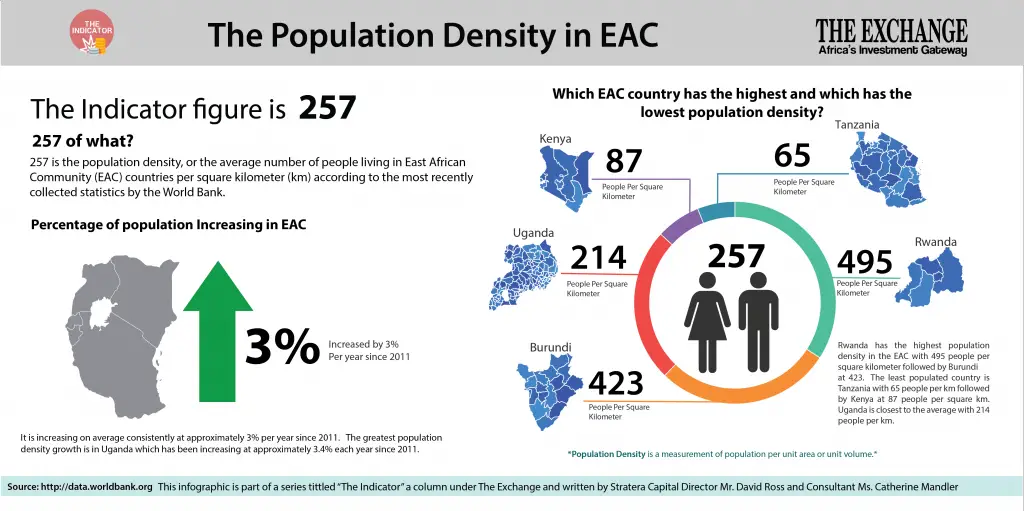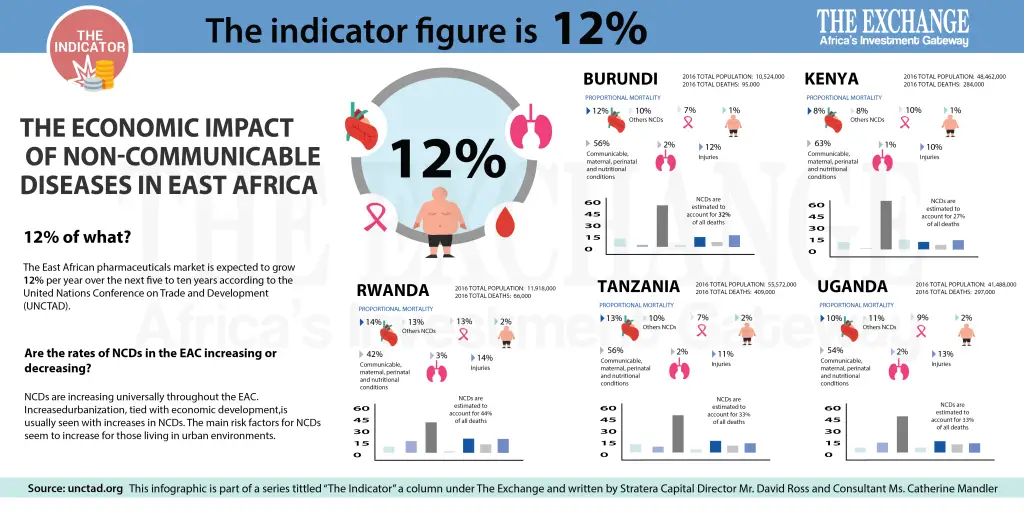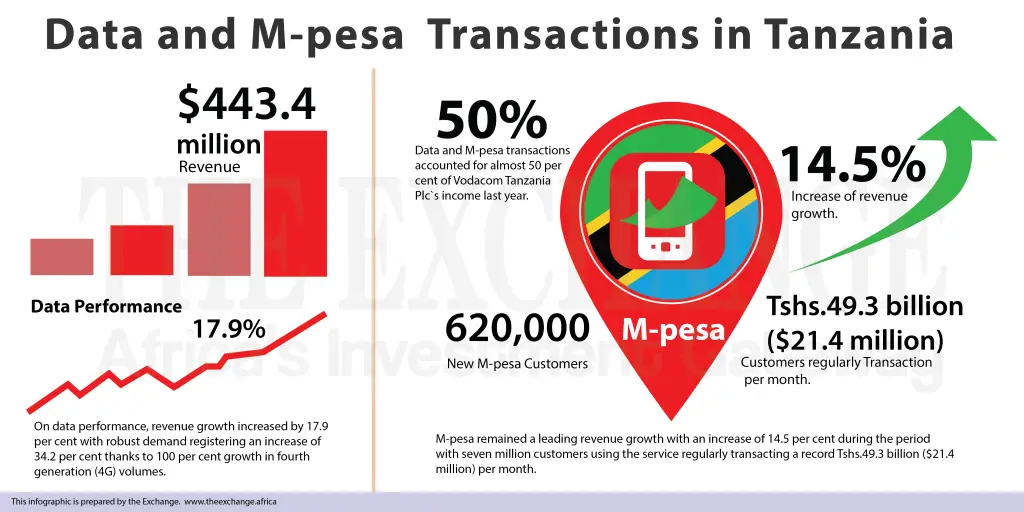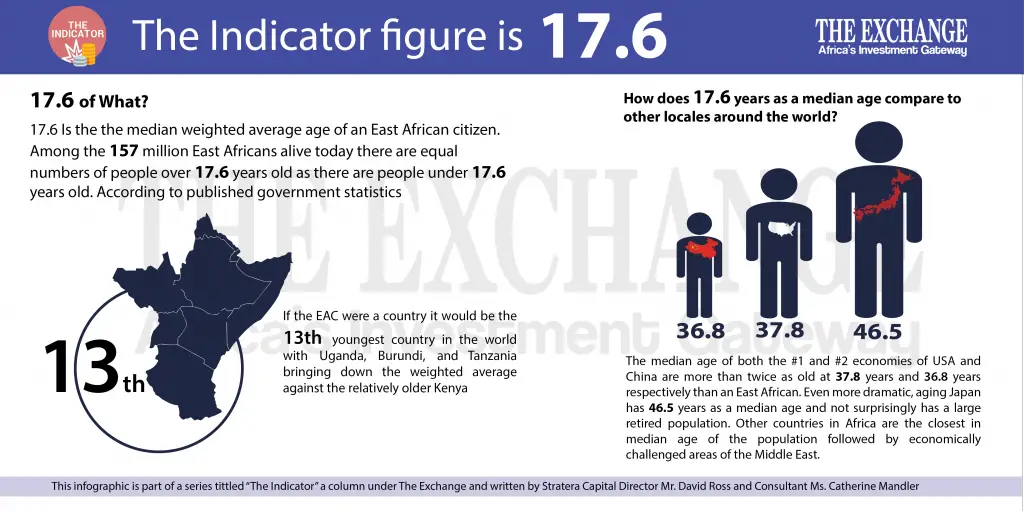- Africa’s new dawn: the rising role of digital and AI in agriculture
- Can Dangote Refinery Transform Africa Energy Ambition
- Gallup Survey: 80 per cent of Kenyan Workers Are Disengaged and Seek New Opportunities
- Madagascar Man Freed from 5KG Tumor After 15-Year Struggle
- How women in Africa are perceived and treated
- Sugar consumption in Kenya to Increase to 1.23 Million Tonnes
- Can Somalia and Turkey Oil deal Bring Change in Somaliland
- Remittances to Kenya dropped to $371.6 million in June, marking a six month low
Author: Indicator
The Indicator is a column focused on assessing an economic for financial statistic in Africa and breaking it down into bite-sized nuggets of knowledge for investors. The Indicator is written by two interesting contributors to The Exchange, Mr. David Ross and Ms. Catherine Mandler. Mr. Ross is a Managing Director of Statera Capital and US Ambassador to the Open University of Tanzania. He is active in growing companies in Eastern and Southern Africa through primary investment, investment advisory, strategic partnerships and executive education. You can connect with him on email at david@stateracapital.com. Catherine Mandler is a Consultant with Statera Capital. Connect with her at catherine@stateracapital.com
In this column called “The Indicator,” we will be taking an economic or financial statistic from East Africa and breaking it down into bite-sized nuggets of knowledge for investors.
This month’s indicator figure is 38,402,400.
38,402,400 of what?
Property rights are the basic foundation of capitalism, trade, and investment. There is land underneath each of our feet that is cultivated by industries such as agriculture, construction, banking and dozens more.
An estimated 38,402,400 or 22% of all people living in East African Community (EAC) countries feel insecure about their rights to their primary home or land. This is according to a recent study of 140 countries by Prindex, an organization focused on helping to increase property rights for citizens around the world.
What do you mean by insecure property rights?
Despite what laws or legislation is on the books of a country, insecurity around property rights of land …
In this column called “The Indicator,” we will be taking an economic or financial statistic from East Africa and breaking it down into bite-sized nuggets of knowledge for investors.
This month’s indicator figure is 597,028,294
597,028,294 what?
597,028,294 US dollars is the projected cumulative annual cost of cyber security attacks across East African Community (EAC) countries for 2020 as extrapolated from a 2017 study “Demystifying Africa’s Cyber Security Line”.
What is a cyber security attack?
A cyber security attack often called a “hack” is when a nefarious individual or group uses a computer to invade the computer or the computing network of a person or company.
Cyber attacks can come from external attackers such as cybercriminals seeking to steal money, damage the reputation, or block access to computing resources in order to extort ransom money from a company. Cyber attacks can also come from “insiders” — frustrated current or former …
This month’s indicator figure is257
257 of what?
257 is the population density, or the average number of people living in East African Community (EAC) countries per square kilometer (km) according to the most recently collected statistics by the World Bank.
Which EAC country has the highest and which has the lowest population density?
Rwanda has the highest population density in the EAC with 495 people per square kilometer followed by Burundi at 423. The least populated country is Tanzania with 65 people per km followed by Kenya at 87 people per square km. Uganda is closest to the average with 214 people per km.
How does the population density in the EAC compare to other regions of the world?
The average population density for the EAC puts it as nearly as populated as the United Kingdom and Pakistan and more populated than Germany, Switzerland, or China. If we look …
Today’s indicator figure is 12%.
12% of what?
The East African pharmaceuticals market is expected to grow 12% per year over the next five to ten years according to the United Nations Conference on Trade and Development (UNCTAD). The majority of this growth will be due to non-communicable diseases (NCDs) such as heart disease, stroke, chronic kidney disease, dementia, osteoporosis, cataracts, diabetes, cancer, and other similar ailments.
How do the rates of NCDs in the EAC compare to other regions of the world?
The rates of NCDs in the EAC are approaching the rates found in developed economies such as North America and Europe. They have not matched them yet but the growth seen in recent years indicates that they will soon.
Are the rates of NCDs in the EAC increasing or decreasing?
NCDs are increasing universally throughout the EAC. Increased urbanization, tied with economic development, is usually seen with …
Today marks 17 years since the International Labour Organisation (ILO) declared a fight against child labour.
June 12th is World Day Against Child Labour, the day is meant to raise awareness and activism to prevent child labour.
Child labour are all forms of work by children under the age laid down in ILO standards. Worst forms of child labour include slavery, debt bondage, prostitution, pornography, forced recruitment of children for use in armed conflict, use of children in drug trafficking and other illicit activities, and all other work likely to be harmful or hazardous to the health, safety or morals of girls and boys under 18 years of age.
The ILO has recently estimated that some 246 million children aged 5-17 years are engaged in child labour around the world. Of these, some 179 million are caught in the worst forms of child labour.
Africa has the greatest …
Data and M-pesa transactions accounted for almost 50 per cent of Vodacom Tanzania Plc`s income last year thanks to an over Tshs.170 billion ($73.9 million) investment to expand and modernize the network.
Vodacom`s Finance Director, Jacques Marais said in Dar es Salaam on Tuesday 14th May 2019 during a briefing to investors and the media of the company`s annual results for the year ending March 2019.
Marais said M-pesa remained a leading revenue growth with an increase of 14.5 per cent during the period with seven million customers using the service regularly transacting a record Tshs.49.3 billion ($21.4 million) per month.
`During the year, we added 620,000 new M-pesa customers, a growth of 9.7 per cent M-pesa transaction volumes increased 16.4 per cent and M-pesa values transacted grew 16 per cent,` he said while noting that `Lipa kwa M-pesa` platform had 11,000 merchants who processed Tshs.1.1 trillion ($478.2 million) …
The indicator in question in this column is figure 17.6.
17.6 of what?
According to published government statistics, the median weighted average age of an East African citizen is 17.6 years old. Among the 157 million East Africans alive today there are equal numbers of people over 17.6 years old as there are people under 17.6 years old.
So how do 17.6 years as a median age compare to other locales around the world?
If the EAC were a country it would be the 13th youngest country in the world with Uganda, Burundi, and Tanzania bringing down the weighted average against the relatively older Kenya. To add perspective, the median age of both the #1 and #2 economies of the USA and China are more than twice as old at 37.8 years and 36.8 years respectively than an East African. Even more dramatic, ageing Japan has 46.5 years as median …








